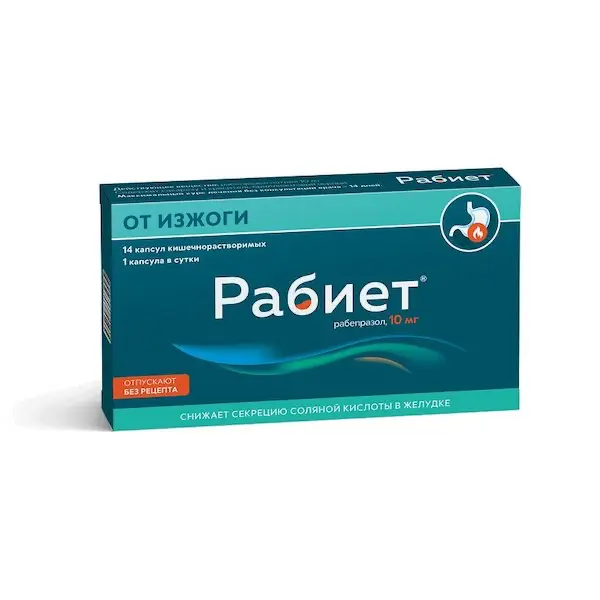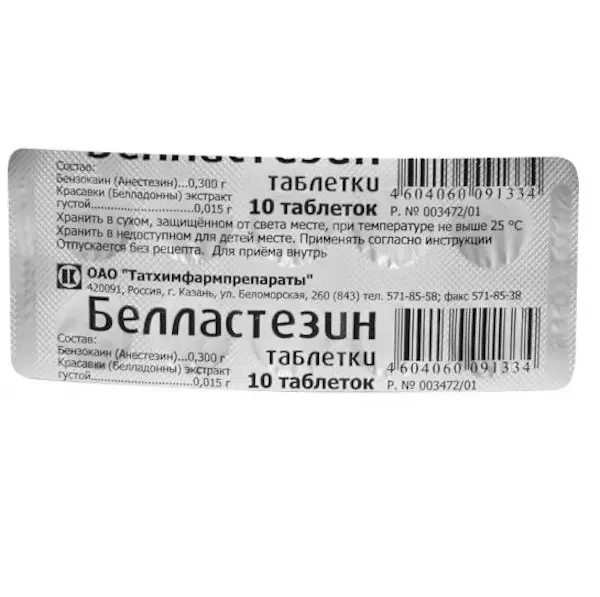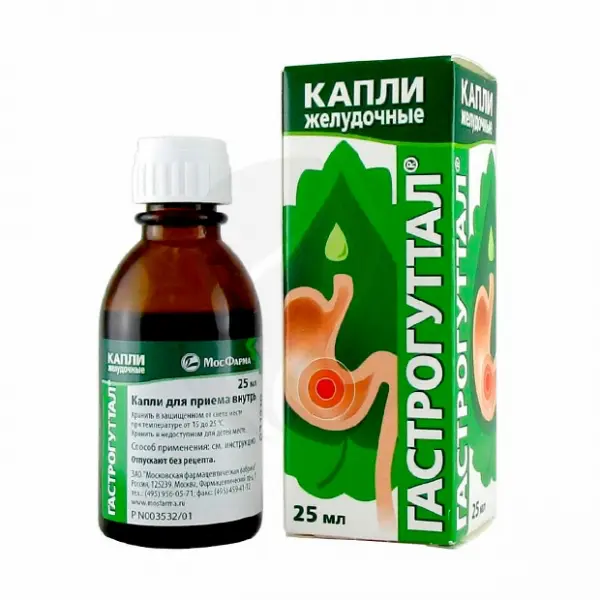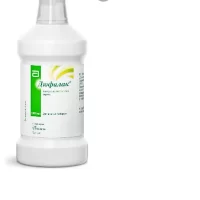Description
Rabiet Pharmacodynamics
Mechanism of action
Rabeprazole sodium belongs to the class of antisecretory compounds, benzimidazole derivatives. Rabeprazole sodium inhibits gastric juice secretion by specifically inhibiting H+/K+ ATPase on the secretory surface of gastric parietal cells. The H+/K+ ATPase is a protein complex that functions as a proton pump; thus, sodium rabeprazole is a proton pump inhibitor in the stomach and blocks the final stage of acid production. This effect is dose-dependent and results in suppression of both basal and stimulated acid secretion regardless of the stimulus. Rabeprazole sodium has no anticholinergic properties.
Antisecretory action
After oral administration of rabeprazole sodium at a dose of 20 mg, the antisecretory effect develops within 1 hour. Inhibition of basal and stimulated acid secretion 23 hours after the first dose of rabeprazole sodium is 69% and 82% respectively and continues up to 48 hours. This duration of pharmacodynamic action is much longer than that predicted by the half-life (T1/2) (approximately 1 hour). This effect can be explained by the prolonged binding of the drug substance to the H+/K+ ATPase of the gastric parietal cells. The magnitude of the inhibitory effect of rabeprazole sodium on hydrochloric acid secretion reaches a plateau after three days of taking rabeprazole sodium. When discontinued, secretory activity is restored within 1-2 days.
Effect on plasma gastrin levels
In clinical trials, patients took 10 or 20 mg of rabeprazole sodium daily for a treatment duration of up to 43 months. Plasma gastrin concentrations were elevated during the first 2 to 8 weeks, reflecting an inhibitory effect on acid secretion. Gastrin concentrations returned to baseline levels usually within 1-2 weeks after discontinuation of treatment.
Effects on enterochromaffin-like cells
In study of human gastric biopsy specimens from the antrum and the stomach floor of 500 patients treated with rabeprazole sodium or the comparison drug during 8 weeks no steady changes in morphological structure of enterochromaffin-like cells, gastritis severity, frequency of atrophic gastritis, intestinal metaplasia or spread of Helicobacter pylori infection were found.
In a study involving more than 400 patients receiving rabeprazole sodium (10 mg/day or 20 mg/day) for up to 1 year, the incidence of hyperplasia was low and comparable to that of omeprazole (20 mg/kg). No cases of adenomatous changes or carcinoid tumors observed in rats were reported.
Other effects
No systemic effects of rabeprazole sodium with respect to the central nervous system, cardiovascular or respiratory systems have been found at this time. It has been shown that rabeprazole sodium when administered orally in 20 mg for 2 weeks has no effect on thyroid function, carbohydrate metabolism, blood concentration of parathyroid hormone, and concentrations of cortisol, estrogen, testosterone, prolactin, glucagon, follicle stimulating hormone (FSH), luteinizing hormone (LH), renin, aldosterone and somatotropin hormone.
Indications .
Symptoms of dyspepsia associated with increased gastric acidity, including symptoms of gastroesophageal reflux disease (heartburn, acid reflux).
Contraindications
– Hypersensitivity to rabeprazole, substituted benzimidazoles or excipients of the drug;
– pregnancy;
– Breast-feeding period;
– under 18 years of age;
– sucrose/isomaltase deficiency, fructose intolerance, glucose-galactose malabsorption.
Dosage and administration method
- Orally, in a dose of 10 mg once a day.
- The capsules should not be chewed or crushed. The capsules should be swallowed whole. It is recommended to take the drug in the morning, before a meal. It was found that neither time of day nor food intake influences the activity of rabeprazole sodium, but recommended time of taking rabeprazole contributes to better compliance of patients with the treatment regimen.
- If there is no effect within the first three days, specialist examination is necessary. The maximum course of treatment without physician’s consultation is 14 days.





